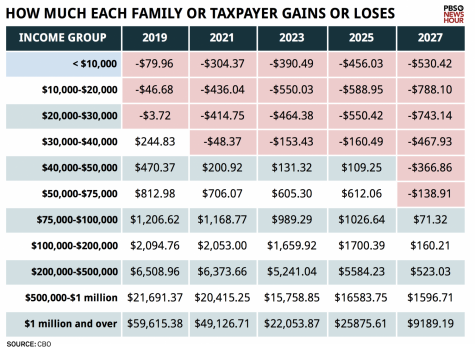Trump’s Tax Overhaul
Plan Projected to be Implemented Before End of Year
On Friday, December 1, the United States Senate voted in favor of a comprehensive tax policy overhaul, The Tax Cuts and Jobs Act, which affects every aspect of the American economy but will give the most benefit to the nation’s highest earners.
Before this vote, both the Senate and the House of Representatives drafted their own policies in accordance with what they thought was best for the country. Each has pieces of legislation that the other does not.
Following the House of Representatives’ vote in favor of the tax policy on November 16, the two legislative arms of the United States government began the week of December 11 to reconcile points of emphasis across both policies with the hope that President Trump will sign this policy into law before the end of the year.
A major area of disagreement between the House and Senate was the possible deduction of interest on home equity loans. In other words, individuals will now have to pay taxes on the interest of their home loans, something they did not have to do prior.

In the last few days, Republicans have been convening to make sure that they have enough votes to push the legislation through Congress and to the President as soon as possible. On December 18, Florida Senator Marco Rubio, previously a reluctant holdout, put his support behind the bill because of its expansion of child tax credit.
The child tax credit deals with the current legislation that families with children get a tax exemption. Rubio wanted the child tax credit to be expanded before he put his support behind the bill.
Something that has flown under the radar, however, is a new, mysterious provision that is highly beneficial for real estate developers. “Now, of course, our President is a wealthy real estate developer, but so too is the one Republican who had declared opposition to the tax plan, Bob Corker,” Upper School History Teacher Dan Greenstone said. “And he claims that he didn’t know about the provision even though he changed his vote following the provision, which doesn’t make sense.”
Another point of emphasis with the new tax bill focuses on the idea of the standard deduction. According to Greenstone, the standard deduction is the broader term for how wealthier individuals can deduct particular things from their income that don’t get taxed. This includes contributions to a 401K, interest on mortgages, or donations to charity.
But people who cannot normally afford those things aren’t able to deduct those particulars–and wealthy individuals are. The new tax bill increases the standard deduction, thus allowing wealthier individuals to deduct more from their tax bill.
The bill also takes away the mandate for healthcare previously implemented by ObamaCare. Groups project that 13 million people will lose their healthcare as a result.
Republicans are attempting to cut taxes for the Middle and Lower classes for the short term, about 8 years, while arguable masking their true intention of cutting taxes for the rich in the long term. The chart included illustrates this phenomenon perfectly. With this bill, President Trump is adhering to the demands of his wealthy donors while still attempting to play to his support base of uneducated Americans by appearing to cut taxes when he is really not.


